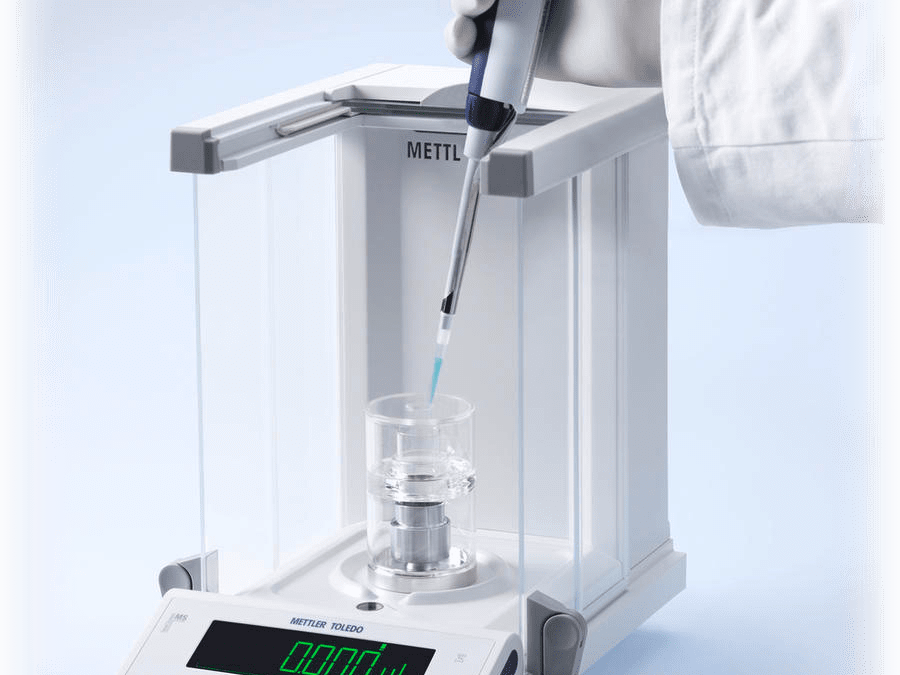In manual pipettes, all the air-displacement (which is 90% of the pipette market) uses the same principles for both measuring and transferring precise amounts of a specific fluid. These work through the use of a piston mechanism. It is either activated by the user’s hand or thumb, which creates a vacuum due to vertical travel of the ceramic or metal piston in the airtight shaft.
When the piston moves up, which occurs when the plunger is released, there’s a vacuum created in the space that has been left by the piston. Air then replaces the vacuum. When you attach a disposable tip to the cone and immerse it in liquid, the liquid is drawn into the tip and then dispensed by the plunger’s depression.
Factors That Can Affect the Performance of a Pipette
The design and use of a pipette are essential to the pipette’s accuracy, along with its continued precision.
Operators need to be trained properly on how to use the pipette and in some cases, compared against the standards to make sure of ongoing good practice. The majority of users are aware that the relative humidity and the air temperature may affect the performance of the pipette, along with the sample’s temperature (for example, newly thawed serum).
In the early pipettes, the heat transference from the operator’s hands resulted in very small changes in the volumes of pipetting. The heat that was absorbed through the instrument’s handle and transferred to the inside components, resulted in these discrepancies.
Today’s modern pipettes have air spaces, which reduce the thermo conductive materials, along with the “heat effect,” which is then considered minimal. If there’s a concern, though, the best technique for a maximum level of accuracy is to use several pipettes and then rotate them regularly.
A common cause of mistakes and inaccuracy is the fatigue of the operator. Even a highly experienced and trained operator is going to experience a reduction in precision and accuracy as time goes by. Modern companies offering pipette calibration restrict the total number of pipettes that a technician is able to calibrate in one day for this precise reason.
In the past two decades, the effect has been recognized the Health & Safety because of the increased number of WURLD cases, which is more commonly referred to as Repetitive Strain Injury. An example of this is carpal tunnel syndrome. Some pipettes are now designed with reduced weight, which eases the discomfort of users while having to do this for longer periods of time. Another solution that a user can choose is an electronic pipette. This is going to help reduce hand fatigue significantly. After your operating button is touched, then the pipette will always operate the same way, offering independent precision and accuracy.
It’s also important to note that component integrity is a crucial part of how a pipette performs. When using any type of mechanical device when several components are interacting with movement, there is going to be friction, loss of tolerance, weakness, fractures, and other issues. This situation is not any different with pipettes where the main goal is to create concise vacuums by using a piston, polymer or rubber seals, springs, or mechanical seals. This has to be added to the possible corrosive effects of the liquid, damage to the external components, improper handling of the pipette, problems with adjusting the volume, and other issues. This is why regularly checking the calibration and performance is so important.
Tips to Maintain Precision and Accuracy
If you want to maintain the precision and accuracy of a pipette, even through ongoing regimes, the pipettes need to be calibrated periodically. The frequency your pipette needs to be calibrated will be dependent on certain factors, which are further explained here.
One factor that is going to significantly impact the precision and the accuracy of a pipette is the training and skill of the user and how carefully the tools are used. How intensively the pipettes are being used is also a factor that has to be taken into consideration.
The type of fluid being dispensed by your pipettes is also going to impact the accuracy and precision. If you are using corrosive or volatile liquids, they may emit vapours or even come into contact with O-rings, seals, springs, and metal pistons. A pipettes specific precision and accuracy is going to impact it, too. A pipette application that requires higher levels of accuracy are also going to demand calibration more often.
There’s no absolute for the calibration intervals; however, each organisation or institute needs to create a risk analysis or calibration requirement paper. Pharmaceutical companies that manufacture drugs or that undertake a clinical analysis of various specimens are going to have requirements that are more stringent than pipettes used in a school chemistry class.
Under normal use conditions, the majority of pipettes are able to be calibrated semi-annually (this means every six months) while offering satisfactory levels of performance. For those who work in institutions that are being regulated by the FDA or by the GLP/GMP regulations will benefit greatly from quarterly calibration (every four months). For more critical applications, you may need to calibrate the pipette every month. There are some laboratories that will make weekly checks on the balance, too. However, even this has to be done carefully. Keep in mind, these are general guidelines.
There are some pipette calibration businesses that offer different levels of calibration or service. This is dependent on the institutes or operators’ requirements, though.
Pipette Calibration Process
When it comes to pipette calibration, it’s a good idea to understand why it is important, which is something that has been highlighted here. Being informed and using the services of a quality calibration service provider is the best way to ensure that the desired results are achieved. Make sure to keep this in mind when working with pipettes, for any purpose, regardless of how big, or small they may be. This is going to pay off in the long run and ensure the desired results are achieved.

